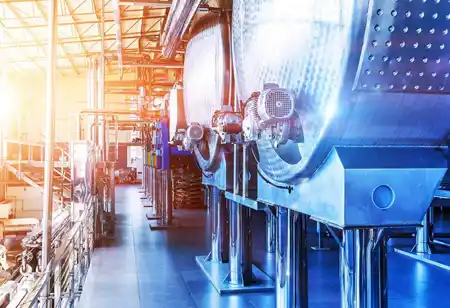The chemical industry's commitment to the circular economy reflects a broader global shift towards sustainability and environmental responsibility
FREMONT, CA: In an era marked by sustainability and environmental responsibility, the chemical industry is undergoing a transformative shift towards embracing the principles of the circular economy. This article explores how the industry is redefining its approach to manufacturing, consumption, and waste management to create a more sustainable and resource-efficient future.
The Circular Economy Paradigm
The circular economy represents a departure from the traditional linear economic model of "take, make, dispose." Instead, it envisions a closed-loop system where resources are kept in use for as long as possible, with the aim of minimizing waste and maximizing the value of materials and products.
Key Pillars of the Circular Economy in the Chemical Industry:
1. Reduce, Reuse, Recycle: Chemical companies are committed to reducing waste generation and promoting the reuse and recycling of materials and products.
2. Product Design: Designing products with a focus on longevity, repairability, and recyclability is central to the circular economy. Chemical companies are reevaluating product designs to align with these principles.
3. Sustainable Sourcing: Embracing sustainable sourcing practices ensures that raw materials are obtained responsibly and with minimal environmental impact.
4. Extended Producer Responsibility: Companies are taking greater responsibility for the entire lifecycle of their products, from production to disposal. This includes designing products that are easier to recycle and managing post-consumer waste.
Sustainable Practices in Action
The chemical industry is actively implementing sustainable practices to advance the circular economy:
1. Eco-Friendly Products: Companies are developing products with reduced environmental impact, such as biodegradable plastics, green chemicals, and eco-friendly packaging materials.
2. Chemical Recycling: Advanced recycling technologies are being employed to convert waste plastics and other materials into valuable chemical feedstocks, effectively closing the loop on the circular economy.
3. Resource Efficiency: Maximizing resource efficiency is a core objective. This includes optimizing manufacturing processes to reduce waste and energy consumption.
4. Collaboration: Collaboration across the value chain is essential. Chemical companies are working closely with suppliers, customers, and recycling partners to create a seamless circular ecosystem.
Success Stories
Several success stories exemplify the industry's commitment to the circular economy:
1. Closed-Loop Plastic Recycling: Chemical companies have developed technologies that enable the recycling of plastics, creating a closed loop where plastics can be reprocessed and reused repeatedly.
2. Sustainable Packaging: The industry is shifting towards sustainable packaging solutions, such as biodegradable plastics, plant-based materials, and innovative designs that reduce packaging waste.
3. Waste-to-Energy: Some companies are converting waste materials into renewable energy sources, reducing both waste and greenhouse gas emissions.
Challenges and Opportunities
While progress is evident, the chemical industry faces challenges in fully embracing the circular economy:
1. Technological Advancements: Continued innovation and investment in advanced recycling and sustainable technologies are essential to overcoming technical barriers.
2. Regulatory Landscape: Evolving regulations can impact the adoption of circular economy practices. Companies must stay informed and adapt to changing requirements.
3. Consumer Behavior: Raising awareness and educating consumers about the benefits of the circular economy is crucial to driving demand for sustainable products.
4. Economic Viability: Ensuring that circular economy practices are economically viable remains a challenge, as they require upfront investment and may have longer payback periods.
Conclusion
The chemical industry's commitment to the circular economy reflects a broader global shift towards sustainability and environmental responsibility. Embracing the principles of reducing waste, reusing materials, and recycling products is not only essential for addressing environmental challenges but also for securing a more resource-efficient and sustainable future. As the industry continues to innovate and collaborate across the value chain, it is poised to play a pivotal role in the global transition towards a circular economy.

